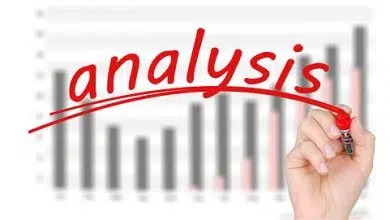Utility means want satisfying power 0f a commodity. Individuals derive utility when they consume a particular commodity or service. Utility is 0f two types namely : Total Utility and Marginal Utility.
Total Utility And Marginal Utility: Total utility is the utility derived by a consumer from the consumption of a commodity. It is the sum total of utils (term used for measuring utility) derived from the consumption of total units of a commodity. Total utility remains at first low and increases with every increase in the consumption of units of a commodity.
The total utility curve slopes upwards from left to right. It denotes the fact that a consumer derives more utility when his stock of consumable commodity is more.
Marginal utility is the additional utility derived by an individual from the consumption of one or more unit of a commodity. Boulding defined marginal utility as “the increase in the total utility which results from a unit increase in consumption“. Marginal utility denotes the in the total utility due to the change in quantity consumed of commodity.
The marginal utility curve slopes downwards from left to right. It denotes the fact that a consumer derives less and less satisfaction after the point of satiety from the consumption of a commodity.
Illustrative Relationship between total utility and marginal utility :
The relationship between total utility and marginal utility may be explained from the following table:
| Number of Mangoes | Marginal Utility | Total Utility |
| 1 | 20 | 20 |
| 2 | 12 | 32 |
| 3 | 8 | 40 |
| 4 | 5 | 45 |
| 5 | 0 | 45 |
| 6 | -5 | 40 |
Table: Total utility and Marginal Utility
In the above table the consumer is taking one mango after another. He gets 20 utils from the consumption of first mango. His total utility increases to 32 utils after taking the second mango. It implies that the consumer received 12 utils of additional utility. It is the marginal utility of second mango. Similarly the total utility of mangoes is 20+ 12 + 8 + 5 = 45. The marginal utility of 4th mango is 5.
As shown in the above table, the consumer attains complete satisfaction by consuming 5 mangoes. The 5th mango gives the maximum total utility. Here marginal utility is zero. If the consumer takes 6th mango it gives him negative utility. A rational Consumer wishes to consume only 5 mangoes when marginal utility is zero and total utility is maximum. We can draw the following conclusions from the above table
1. Total utility is the utility derived from the consumption of all the units of a commodity. It increases as the consumer takes more and more units. But, it increases at a diminishing rate. It reaches maximum level at one stage and afterwards it falls.
2. Marginal utility is the additional utility derived from the consumption of an additional unit of commodity. It diminishes from the beginning. It becomes zero at one stage. Finally it becomes negative.
3. As consumption increases, the total utility increases and the marginal utility diminishes. Total utility is maximum when marginal utility is zero. When total utility is falling marginal utility is negative.
The relationship between total utility and marginal utility can be explained with the help of a diagram.
In the above diagram, utility is shown on OY axis and mangoes are shown on OX axis. TUC. is the total utility curve and MUC is the marginal utility curve. In the diagram TUC slopes upwards up to the point P . But it increases at a diminishing ate. After point P it is diminishing, MUC. is falling from the beginning. It cuts the OX axis at point Q. At point Q marginal utility becomes zero. After point Q, MUC is negative. MUC slopes downwards from left 0 right. It is clear that the total utility is maximum when marginal utility is zero and when total utility is falling, marginal utility is negative.
Marginal Utility and supply of commodity are directly related to one another. If the supply of a commodity is limited, marginal utility of that commodity is high. On the other hand, if the supply of a commodity is more , marginal utility of that commodity is less. Marginal utility of a commodity also depends on the availability of substitutes and complementaries. If the a commodity has close substitutes, its marginal utility will be less. Again, in the case of complementaries, marginal utility increases when a consumer possesses more quantity of the complementaries.





